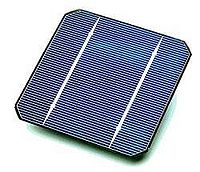The Photovoltaic Effect: Difference between revisions
Akresses99 (talk | contribs) No edit summary |
Akresses99 (talk | contribs) No edit summary |
||
| Line 11: | Line 11: | ||
[[File:Captur.png]] | [[File:Captur.png]] | ||
S<sub>T</sub> and S<sub>T,r</sub> are the absorbed solar radiation and T<sub>c</sub> and T<sub>c,r</sub> are the cell temperatures at outdoor conditions and reference conditions, respectively. I<sub>L,r</sub> is light-generated current at reference conditions and μ<sub>I<sub>sc</sub></sub> is coefficient of temperature at short circuit current. The cell temperature T<sub>c</sub> can be computed from the ambient temperature | |||
Revision as of 19:56, 5 December 2015
CLAIMED BY AKRESSES99
The photovoltaic effect is the creation of electric current or voltage through a material upon exposure to light. It is a physical and chemical phenomenon in response to the transfer of energy from photons.

The Main Idea
The photovoltaic effect is directly related to The Photoelectric Effect, but they are different processes. When light strikes a material surface, the electrons present in the valence band absorb the energy from the photons energy and, being excited, jump to the conduction band and become free. The material is composed of crystallized atoms that are ionized and create an electric imbalance, that drives the electrons. These highly excited electrons diffuse and some reach a junction where they are accelerated into a different material by an electrode. This generates an electric current, so some of the light energy can be converted into electric energy. This current can then be used to power an appliance.
A Mathematical Model
ST and ST,r are the absorbed solar radiation and Tc and Tc,r are the cell temperatures at outdoor conditions and reference conditions, respectively. IL,r is light-generated current at reference conditions and μIsc is coefficient of temperature at short circuit current. The cell temperature Tc can be computed from the ambient temperature
